In 1981, something strange was happening in Portland, Oregon.
In the waning months of that year, visitors to the arcades in the city and the surrounding area arrived to find a new cabinet among the rows of familiar games, often positioned in the furthest corners where the dim lights failed to chase away the darkness. No one knew what the game was. The cabinets had appeared seemingly overnight, with no fanfare, no news, none of the usual excitement that came with the arrival of a new game. Even the arcade employees were uncertain as to what the game was. All they knew is that a small team of men had arrived after hours, installed the game, and left without saying a word. When the owners of the arcades were asked about the cabinets, all they could say was that it was just another new game to add to their collections.
The cabinets themselves were simple; where as other game cabinets sported lush, colorful illustrations and graphics along their exteriors, these cabinets were black on all sides with only three blue stripes to break the monotony. Above the screen, a glowing sign adorned with large, block letters of electric blue spelled out one single word - POLYBIUS.
It seemed like an odd name for a game. Polybius is a name familiar to many, but most are only dimly aware of the man behind it.
Polybius was a Greek historian of great renown; originally hailing from Megalopolis, Arcadia - two utterly badass names for a place that is neither a sprawling megalopolis of neon towers, nor a peaceful idyllic fairy-land, much to my chagrin - Polybius was one of a thousand Arcadian nobles that were taken to Rome as hostages when Arcadia (and especially Polybius’s father, who was an important Arcadian politician) refused to take a side during Rome’s war with their unruly neighbor, Macedon. There, he would become the tutor of the man who would become Scipio Africanus. Later, he would serve as a counselor and advisor to Scipio, whom he would remain life-long friends with. Much of what we know about the rise of Rome and their wars with Carthage comes from Polybius’s seminal work, The Histories. So, next time you read about how Scipio epically pwned Hannibal, just remember that the whole story was recorded by his homie. I’m sure he didn’t exaggerate anything to make home-slice Big Scip look great, or anything1.
Needless to say - Polybius was kind of a big deal. Yet, not exactly who I would choose to name a game after.
Though, I will admit - Polybius just has kind of a cool sound to it, doesn’t it? Can’t discount the possibility that it was chosen because it had a nice ring to it. Oh, he’s also associated with cryptography, with his name being the namesake of the Polybius square.
That might also have something to do with it.
Naturally, curious players flocked to the game in droves, intrigued by the game’s sudden and strange appearance in their usual haunts. By all accounts, it was not a terribly complex game. What exactly the game play entailed is something of a mystery; conflicting reports abound surrounding the nature of the gameplay, with many who claim to have played it saying that they remember the game, they remember playing it… but that’s about it. What little is known of the gameplay suggests that it was a puzzle game of sorts, with graphics described as weird and abstract by those who recall playing it. Some likened it to another popular arcade game at the time, titled Tempest.
However the game played, it must have been fun; the cabinets quickly became something of a favorite among those who frequented the arcades they were found in. Many other cabinets would stand neglected, flashing their lights to no one as many of their prospective players would instead be waiting in one of the long lines that formed behind the Polybius machine, impatiently waiting for their turn to handle the controls. Those who played it often did so for excessively and abnormally long times. According to one report by a former employee of The Clackamas Amusement Hall, it wasn’t uncommon for players to exhaust their entire supply of quarters on Polybius. When they ran out, they’d scrounge more quarters from the change machine if they had any cash, and then promptly join the queue to wait for a chance to play again. Even when some ran out of funds, they’d linger by the machine, watching the player at the controls from over their shoulders. If this employee’s testimony is to be believed, more than once these long wait times would result in arguments between impatient players that escalated to the point of violence.
“I never saw anything like it. I mean, some games were always more popular than others, and people were usually fine waiting a bit or leaving quarters on the dashboard to claim their spot in line, but normally they’d just go play something else while they waited for their turn. When we had that Polybius cabinet though, it was like that was all anyone wanted to play. The rest of the games might as well have not even been there.”
Another account - this one from the purported owner of an arcade who apparently only agreed to speak under the condition of anonymity - claimed that players would often try and stay after closing to play longer, some begging, some even bargaining, offering to pay what little cash they had just for some extra time with Polybius. He even offered this disturbing anecdote:
“One night, I got a call from the cops around eleven o’clock at night, or so. They said they’d caught some kids trying to break into the place through the backdoor. They didn’t make it in, but I went down anyways to check out what had happened. I actually knew the kids who did it. They were regulars. Good kids. I watched Seahawks games with one of their dads. Totally not like them to get up to trouble like that. They swore up and down that they weren’t trying to get in to steal anything. They just wanted to play that Polybius game. I’d only had it for about two weeks at that point and I was already ready to get rid of it. I swear, it was more trouble than it was worth.”
One must wonder if the other arcade owners that had a cabinet in their establishment felt the same. Unfortunately for them, it appears that they didn’t have the luxury of just chucking the cabinets, or returning them to the people they’d gotten them from. According to this owner, the distributor of Polybius was new to the area. No one had ever heard of them before and Polybius was the only game that they offered. Apparently, their sales representatives said if Polybius proved successful, they’d consider bringing in other games. In order to ensure that the game was given a fair shake with the public, they asked the arcade owners to sign contracts that would guarantee the Polybius cabinets would remain up and running for a month, at minimum, and after that time frame the contract could be renegotiated.
One former arcade employee, who had the good fortune of being employed by his father, gave the following testimony to a researcher on Reddit looking into the story.
“It was the damnedest thing. You have to understand, there was usually some sort of agreement or contract between the arcade owner and the video game distributors when it came to setting up cabinets, but my old man said that was the only one that came with a set time frame. The weirdest part is that the company didn’t even want the money out of the machine. I heard the same thing from other guys who worked in the business that got some of the Polybius cabinets. These guys from the company, they’d come in after hours and check the game data. That wasn’t unusual. Most companies liked to get that kind of information to see how popular a game was, how much money was going into it, or how long people were playing it. That kind of stuff. But they also usually came looking for their cut of the profits, too. These guys? They’d just come in without saying a word, scratch some stuff down on a clipboard, and leave just as quickly and quietly as they came in.”
Though it seems that these men with the company would mostly come to the arcades after closing, there’s more than one report from patrons that they were seen going about their business during operating hours. By all accounts, the men were always dressed in black suits, black coats, and black hats.
Who were they? No one’s entirely sure. The company was only identified as Sinneslöschen. If the name didn’t give it away, it was a company based out of Germany. Supposedly. Why was a German game manufacturer dipping their toes into the American market in a single city in the Pacific Northwest rather than New York, Los Angeles, or San Francisco? No one has a good answer.
As Polybius continued to attract players, those who engaged with the game began to complain of strange afflictions shortly after playing. Nausea. Dizzy spells. Headaches. Irritability, agitation, and heightened anxiety. More than one account reports insomnia during the time that Polybius was in their local arcade, while even more speak to lurid and disturbing nightmares. It didn’t take long for players to correlate these symptoms with playing the game. Yet, they continued to play all the same, seemingly unable to abandon the game and possessed by an almost preternatural urge to play it. One player described their experience to a Reddit researcher as follows:
There was one night I got lucky. The arcade was pretty much empty, except for the staff. If the other arcade machines weren’t all making noise, it would have been silent, but it was still much more quiet than it would have been on a busy night. I had the cabinet to myself. It was the most I’d ever been able to play in one sitting, without losing or someone bothering me to give them a turn. That’s how I knew I heard the sound of a woman crying. It was soft, at first. I didn’t really know what it was, I was more focused on the game. When I realized what I was hearing though… I nearly jumped out of my skin. Obviously there wasn’t anyone around that was crying. Not a woman. Not anyone. It spooked me, sure, but not enough to get me to leave. I thought I was just hearing things and believed that until a buddy told me that other people had heard the same thing while they were playing. Weirdest thing about it all was actually that when I went to get a refill on my soda, I found out the arcade was about to close for the night. It felt like I’d only been playing for ten, maybe fifteen minutes, but almost an hour had gone by. I never even noticed.
Other, more extreme claims have been made about the potential adverse effects that came from playing Polybius. Visual and auditory hallucinations, like the often mentioned reports of players hearing a woman crying when playing for long stretches. Amnesia. Lost time. There’s even one claim that one player’s preoccupation with the game resulted in a suicide, though, that should be taken with a gain of salt as there’s no solid evidence to corroborate this.
After the contracted time frame passed, representatives from Sinneslöschen returned to these Portland-area arcades. The previously quoted anonymous arcade owner said the following:
When the month was up, the same guy who’d first offered to let us lease the game came back. He asked me a couple questions about whether or not I was pleased with the game and how it had performed. I wanted to be honest with him. Tell him I wasn’t too impressed with it and I didn’t really like what it seemed to be doing to people. But truth be told, it was making us a small mint. Players were throwing quarters at it like the world was coming to an end and we got to keep all of ‘em. I was willing to keep it around if they were still willing to let us keep all the profit. But the guy just nodded and smiled and said that he was glad to hear we were satisfied but the company had decided that they were going to pull all the cabinets and the contract wouldn’t be renewed. He politely apologized. I pretended to be disappointed to see it go, but once he was out of the office I sighed with relief and thought, Good riddance.
One short month, in one highly localized area - that was the entire extent of Polybius’s exposure to the public. Hardly a blip on the radar in the grand scheme of things. The game came and it left just as fast, leaving perplexed players, arcade owners, and employees behind to whisper among themselves and speculate what exactly they’d just experienced. Rumors began to spread surrounding the nature of the mysterious game. Some claimed it was exactly what it seemed to be - an ill-fated attempt by a foreign company to penetrate a market that was already dense with competition and nearing saturation that simply didn’t pan out. Other theories took a more sinister bent. The employees that examined the machines became otherworldly pastiches of the typical Men in Black figures of UFO folklore. The game itself was speculated to be some sort of government experiment, looking to test novel methods of mind control or psychological warfare on hapless arcade patron, a la the MK Ultra experiments. Some would go so far as to say that the games were preternatural; cursed in some way, or an occult ritual revamped for the electronic age.
Through word of mouth, the tale of Polybius slowly began to percolate throughout the video game scene. If the arcade-era of video games has it’s legends, Polybius became something more like a ghost story. These days, it’s an urban legend of the highest degree; perhaps the most infamous in the entirety of video game history. Lots of folks outside of have claimed to have seen a Polybius cabinet lurking in the corners of their local arcades in the erstwhile annals of yesterday. Some claim to know of a friend or an acquaintance who was driven to madness by the game. No evidence to corroborate them is ever provided. Multiple efforts to research the game and the company behind it has been staged, with little substance to show of it aside from unverifiable testimony from those who claimed to have played it or worked in a place that housed a cabinet. No one associated with the game’s development or the company of Sinneslöschen has ever come forward to speak about it.
As things are, it’s unlikely that the mystery of Polybius will ever be solved. Instead, it will remain as a brief but bizarre episode in the long and storied history of video games. A relic of a lost time. A myth - as that’s exactly what it is.
Yes, yes - the story of Polybius is, in fact, fictional.
We think.
Given the amount of Polybius cabinets that have been made to replicate the supposed game, either as a joke or a legitimate stab at creating a hoax, it’s easy to see why people are convinced that there’s something more to the story than just an urban legend.
One of the most intriguing aspects of the Polybius legend is that, while it was almost certainly adapted into the succinct and bite-sized classic creepypasta format that it has since become best known as, it did not, as most conventional creepypastas did, originate on 4chan’s /x/ board in the early 2000’s. Believe me, it did get posted their quite frequently - /x/ was actually the first place I was exposed to the story - but the tale of Polybius long predates the concept of creepypasta, and even 4chan itself. Hell, the urban legend was already so well established in the gaming community by 2006 - three scant years after 4chan’s establishment, and two before the popular creepypasta is first known to be published on the site - it was worked into and episode of The Simpsons, Please Homer, Don’t Hammer ‘Em as a background gag.
So, that begs the question - if not in the bowels of early 2000’s 4chan, where did the story of Polybius originate?
The first online record of Polybius comes from a website called coinop.org, which published an article on the mythical game in 1998. The author of the piece is not cited. The website itself is a rather bare-bones site dedicated to cataloguing arcade games that seems to be legitimate, rather than just a spoof website made to host the hoax of Polybius. There was an edit made to the article in 2009, over a decade later, does mention a name that heavily implies belongs to the original author. It reads as follows:
Put a pin in the name Steven Roach. We’ll come back to him.
Many of the details present in the article would typify the story (and that I generously elaborated on above) seem to be introduced in this article, though it’s still uncertain whether or not coinop.org was where the legend of Polybius first floated to the surface. It’s also unknown if the details such as the Men in Black or the name Sinneslöschen - a German compound word that roughly translates to loss of sense - were additions fabricated by the author of the coinop.org article or already associated with the urban legend.
Over the years, many potential sources for the origin point of Polybius have been posited. One of the more plausible comes from Brian Dunning. If you’ve heard of Dunning before, it’s because he’s a “professional skeptic” that made a name for himself by writing books and hosting a weekly podcast, Skeptoid, in which he apparently epically pwns the delusional schizoid believers in the paranormal by using FACTS and LOGIC. Before Adam Ruins Everything, Professional Fact-Checkers on the payroll of the Ministry of Truth, and Fedora-tipping Nu-Athiests, you had Dunning.
Basically, he was this wojack before wojacks were even a thing.
He was also arrested for wire fraud in 2014 for running an affiliate marketing scheme on eBay, netting a potential $400k. Guess he was too busy furiously striking down all the idiots who believe in bigfoot to do his research on what constitutes as wire fraud.
Anyways, I don’t really have much love for guys like Dunning, who seem to think that stating Erm, actually, Area 51 is just a military installation, they don’t have aliens down there, is some sort of revolutionary statement and not just common knowledge. They seem to derive their fun from sucking all the mystery, whimsy, and joy, because… science, logic, reason. Or some type of ur-Redditor shit. Believing only in what the experts tell you is true is heckin’ le epic, don’t you know?
But in May, 2013 - a year before he was sentenced to fifteen months in prison - he did a deep-dive into the Polybius story that offers some interesting insight into the topic.
In his investigation Dunning managed to track down exactly one man who claimed to have an original Polybius cabinet in his collection - Robb Sherwin. However, outside of some pictures of dubious origin and a joke video in which Sherwin plays the game and pretends goes insane, there’s no solid evidence that he owns a legitimate copy of a Polybius cabinet, or that the game ever did exist. Dunning then goes on to say that the first mention of Polybius in print was in an issue of GamePro published in 2003. When researching gaming magazines contemporary to the story, there’s no mention of Polybius anywhere.
However, Dunning does come to the conclusion that Polybius may not have been entirely fabricated. While he never manages to find a definitive source for the legend, he did uncover an incident that may well have been the genesis of Polybius.
On November 29th, 1981, the Eugene Register-Guard published a story in the daily papers under the title, Tummy Derails Asteroid Champ, detailing an attempt by a twelve year old Portland-area lad named Brian Mauro to break the world record for the longest game of Asteroid - a popular arcade game at the time. Unfortunately, a whole staggering twenty-eight hours into the ordeal, Mauro began to flag. According to Rhonda Nelson, an employee of the Malibu Grand Prix arcade in Beaverton, Oregon, Mauro began to exhibit signs of anxiety, nervousness, and stress as he played, as, yeah - staring at a screen for twenty-eight straight hours is gonna do that to you. She ultimately credits not his endurance, but a stomach cramp that brought his stab at glory to a premature end.
“He said he drank too many cokes. He left the game… he didn’t come back.”
Reportedly, Mauro was so exhausted from the ordeal that he spent the following two days in bed, unable to function or consume anything more substantial than soup. Twenty-eight hours of straight gaming and guzzling nothing but syrupy-sweet sugar water (and orange juice, apparently) - Mauro may not have attained the record he so desperately desired, but he did prove himself to be a true gamer. For this, we salute him.
Dunning also found another story written by one Cat DeSpira for the vintage gaming publication, Retrocade, detailing another episode of gaming strangeness on the exact same day Mauro made his valiant stand, at the exact same arcade… and he didn’t link to it. And this is where Dunning’s article falls short and fails to provide details that are crucial to the story. Thus, I did a simple Google search, fearing that DeSpira’s article had been lost to time, only to find that DeSpira had not only failed to mysteriously disappear into the mists of time (or prove to be a fabrication of Dunning’s), but also published a new article in 2015 on her own WordPress blog, Retrobitch, titled, Reinvestigating Polybius: With 2015 Update. DeSpira’s account is well worth a full read - after you finish this piece, of course.
According to DeSpira, while Mauro was glued to the Asteroid cabinet, another boy - fourteen-year old named Michael Lopez - was playing the game Tempest with his friend. Recall how Tempest was a game that often serves as the closest comparison to Polybius in many versions of the story? There’s probably a reason for that.
While playing Tempest, Lopez began to feel unwell. DeSpira managed to track down Lopez to discover that, circa 2015, he was the owner of a night club in Seattle. He gave her the following testament.
“I began to feel a weird sensation in the back of my head, then my vision started going out. Little flashing lights. Suddenly I got sick and stumbled outside where I threw up all over the parking lot. One of my friends walked with me back home, but we didn’t make it all the way there. My head hurt so bad. It got to where I couldn’t speak. I couldn’t walk any more. I collapsed on someone’s lawn, four blocks from my house, rolling and screaming in pain. It felt like my head was cracking open. Someone called the cops. That was the first migraine headache I ever had. I’ve had them off and on my whole life since. But it was freaky because I didn’t know what was happening at the time.”2
Naturally, with two epic pro-gamers mysteriously crashing and burning at the same arcade on the very same day, word spread quickly through the town of Beaverton and into the surrounding Portland suburbs. Michael Lopez recounts that, by the time he arrived in school on Monday, the rumor mill was ablaze with fantastical accounts of how his own incident was a case of the game attempting to possess him. The story had rapidly taken on a life of it’s own. Again, he states thusly:
So - the offending Tempest cabinet that sparked Lopez’s medical episode just conveniently… disappeared, did it? How mysterious… I wonder why?
DeSpira makes note that while there is no official police record that corroborates Lopez’s account, as Oregon state regulations mandate that all police records be shredded after twenty years. Interestingly, however, she did manage to find the 9/11 dispatch call, which had been preserved. The Mauro and Lopez incidents are not hearsay - they happened, and the proof to validate them exists.
So, we have on good authority and in concrete records that an arcade in Beaverton, Oregon (only a short drive from Portland) did have two medical-related gamer casualties, and that the accounts rapidly became local urban legends full of inconsistencies and confabulations. That happened. One of the game cabinets - Tempest, which is often conflated with Polybius - disappeared in the aftermath. That’s confirmed, too. But what about the detail of shadowy, sinister government spooks being involved with the whole thing?
Well, as DeSpira discovered, they were there, too. Albeit not in the way the Polybius legend may lead you to believe.
Only ten days after Lopez’s incident and Mauro’s noble Asteroid game, arcades across the Portland area - including Beaverton - were stormed by local police and federal agents in what became known as The Video Game Raid, apparently looking for evidence of illegal gambling rackets being held on arcade premises. If that sounds absurd, one arcade owner was arrested after admitting he had rigged some of the machines to facilitate illegal gambling. This was not an isolated incident - in the 80’s, arcades were a hotbed of illegal activity. Dark, shadowy, large rooms with lots of kids and, more importantly, teenagers looking to get up to mischief - it doesn’t take a large leap in logic to understand why these might be ideal places to sell stolen goods, illegal substances, or stage gambling rackets. Even before the Video Game Raid, arcade owners in the area noted that it was not uncommon for federal agents from the FBI and local fuzz to make unannounced visits and do walk throughs, looking for truant students, shady characters, and dirty dealings. In 1981 alone, DeSpira reports over 52 arrests were made at Portland-area arcades, and over 7 sting operations and raids were staged by federal agents. Apparently, arcades in the Pacific Northwest were the child-friendly equivalent to the mob-run Vegas of the 50’s.
Interestingly, a year after the incidents at the Beaverton Grand Malibu Prix arcade, a new arcade opened up in Seattle, Washington, called Games People Play. The place proved to be a hit with local kids, but the proprietors of the newly minted arcade weren’t looking to swipe quarters or sling greasy, overpriced pizza to impressionable minors.
They were looking for something more substantial than that.
Unbeknownst to the patrons of Games People Play, the cabinets they were shoveling thousands of dollars in quarters into and the screens they had their eyes glued to - well, they were watching them back. Microphones had been installed behind the panels and hidden cameras mounted behind one-way glass insets, all for the purpose of recording self-incriminating statements by questionable patrons or catching criminals pawning stolen goods. Games People Play was not your typical arcade; it was a sting operation. A front for the Federal Bureau of Investigation. Over the course of seven months, over twenty-five arrests were made at Games People Play, with all of the offenders being charged with intent to sell stolen goods. One bust led to the retrieval of over four hundred thousand dollars in stolen property - over a million dollars when adjusted to 2024’s Biden Bux.
By all accounts, the Feds apparently ran a pretty fun place with Games People Play. If you weren’t looking to pawn off some purloined goods, that was. And if you didn’t mind them recording you the whole time without your consent, which I’m pretty sure is illegal in most states, but hey - when has that silly piece of paper that guarantees our rights or whatever ever stopped them from doing their jobs?
One of the most intriguing aspects behind the Games People Play plot, however, was that the entire stock of arcade cabinets used during the operation were specifically chosen due to the smoked glass bezels mounted around the screen, which made them choice candidates to install hidden cameras within. Among the titles tapped by the feds as ideal candidates were games like Scramble, Galaxian, and… can you guess?
Tempest.
These games were very popular, difficult to find for sale, and expensive; highly coveted pieces that made arcade owners a lot of money. People were going to notice if they disappeared from an arcade floor. However, if these very popular, very visible games suddenly disappeared from all Seattle-area arcades and suddenly turned up again at this new place called Games People Play that basically just popped up overnight… well, that might make a few eyebrows raise among customers. And the criminals.
To avoid suspicion, all of the games used in the Games People Play sting were purchased from arcades in the nearby Portland area3. This means that, overnight, pretty much every Tempest cabinet vanished from arcade halls across Western Oregon as the G-men snapped them all up for their little covert operation. Including the Malibu Grand Prix, where Lopez’s offending Tempest cabinet just conspicuously vanished shortly after the fact. In fact, more than a few kids were present to see the feds cart these games away.
Now, let’s put on our thinking caps, turn on our imagination, and play a little game. Imagine you’re a ten year old in Beaverton around this time. All anyone has wanted to talk about for the past week has been the two boys who were suddenly stricken down by violent medical episodes while playing games at the Malibu Grand Prix. Maybe you were even there when it happened. Or your best friend was. All you know is one of these guys was playing Tempest - you know this because no one has wanted to touch the game since the Lopez kid was found passed out in someone’s lawn screaming and convulsing like a madman after chundering pizza and coke all over the arcade parking lot. Now you’re being told that Timmy down the street was at the arcade and men in black government jackets were wheeling out the Tempest cabinet the other day. And not just that - your cousin Jack, who goes to a school in the next town over, says his friends told him the same thing happened at their arcade. Suddenly, word is coming in from neighboring suburbs that there’s no Tempest cabinets left at all. They’re all gone.
Yeah - you might begin to believe some crazy shit. I mean, you’re ten, you probably still think the moon is made of cheese and there’s a big scary monster under you bed (spoilers: there is).
So, what do we have? Players suffering from strange maladies, induced by video games (and an overindulgence in soda), a game that resembles Polybius (Tempest), a heavy presence of alphabet agency spooks, and the sudden disappearance of a number of games, including the one that’s most often conflated with Polybius; all the integral pieces of the Polybius legend are present. Correlation does not always equate to causation, but the same time, when one spots smoke, there’s most often a fire behind it.
Again, I must commend Cat DeSpira for putting in a truly admirable amount of leg-work to uncover the details that set the stage for what became Polybius. In my own research, it appears no one has done more work than she has in getting down to the brass tacks of this mystery, and for that, I say she deserves the true 21 Light-Gun Gamer Salute we offered brave Brian Mauro.
Oh. And then there’s the matter of Steven Roach. You did put a pin in that name and tack it to your conspiracy corkboard, didn’t you? DeSpira also follows up on the aforementioned Steven Roach from the coinop.org post. This article is running a bit long as it is, so, if you want all the details for yourself, again, I recommend you read DeSpira’s article.
Suffice to say that Roach did not, as I previously speculated, write the article about Polybius on coinop.org. In fact, he only appeared in the comments section of the article in 2006, almost a decade after it was published, in which he spins a rather lengthy tale in which he claims to have been involved in the production of Polybius while living in Eastern Europe for a shady video game developer. While DeSpira dissects the glaring inconsistencies in his claims, rendering them extremely dubious at best, she presents more research that Roach actually was, as he claims to be, involved in a line of work that involves behavior modification, and did have ties to plying his dark trade in the Czech Republic.
I’ll leave you with this bit from DeSpira as a sample of just how dark Roach’s story gets.
Arriving at Morava Academy in the Czech Republic, 1998, Roach assumed his duties as per usual. He applied and approved methods of “character modification” just as he had in Mexico for those who did not conform to the program’s brain washing techniques. Children were subjected to the same forms of “incentive” applied before; isolation, starvation, physical torture and humiliating abuse. He was arrested in November, 1998, for violating terms of operation along with his wife, Glenda and two Czech citizens, and was charged with a variety of offenses, including child torture, thus ending, one hopes, of ever being able to work with children again.
Yeah. As if this story couldn’t get any more wild, now there’s actual freaks with a boner for mind control and actual convicted child abuse involved. Something something stranger than fiction.
So - did Polybius ever exist? Doubtful. But is the story based on some true, albeit wildly exaggerated incidents that did happen?
Ultimately, I think it’s safe to say it stands to reason that Polybius is, indeed, a heavily-altered and mutated iteration of whatever original urban legends began to circulate through Portland-area arcades and playgrounds throughout the early 1980’s.
I agree with DeSpira when she writes the following:
“I can see one of [these kids] grown up, sitting at the computer 20 years later, reading posts on a forum on ‘Classic Games’ and finding the one about the mysterious Polybius, passed down from the original on Usenet. He would remember the time when he heard of Mauro and Lopez being “incapacitated” by a game. He would recall “the men in black”, the raids, and added them in his response to the post.”
DeSpira also offers this direct quote from, ironically, Polybius himself. Given the nature of the legend of Polybius, the events that seem to have inspired it, and the unreliable nature of urban legends, it feels apropos, if not hauntingly prophetic, that it is his name printed in those sickly green glowing letters atop the cabinets of this sinister game:
“Careful, for when you pick up the pen you may accidentally change history thus allowing the next man in line, with unclear intent, to do the same.”
Spend your quarters wisely. You never know where they’re going.
To be fair, this is mostly a jest; Scipio was that guy.
People who’ve never had a proper, legitimate migraine rather than just a run-of-the-mill nasty headache will never understand just how terrifying the experience of your first is. The first migraine I ever had, I had one of those visual auras and was convinced I was about to have a stroke.
By nearby, I mean that relatively - for those unfamiliar with the Pacific Northwest, Seattle and Portland are about three hours from one another. On a good day, that is.

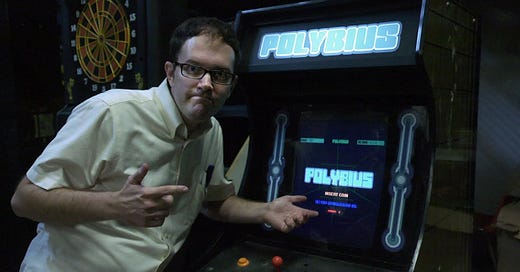


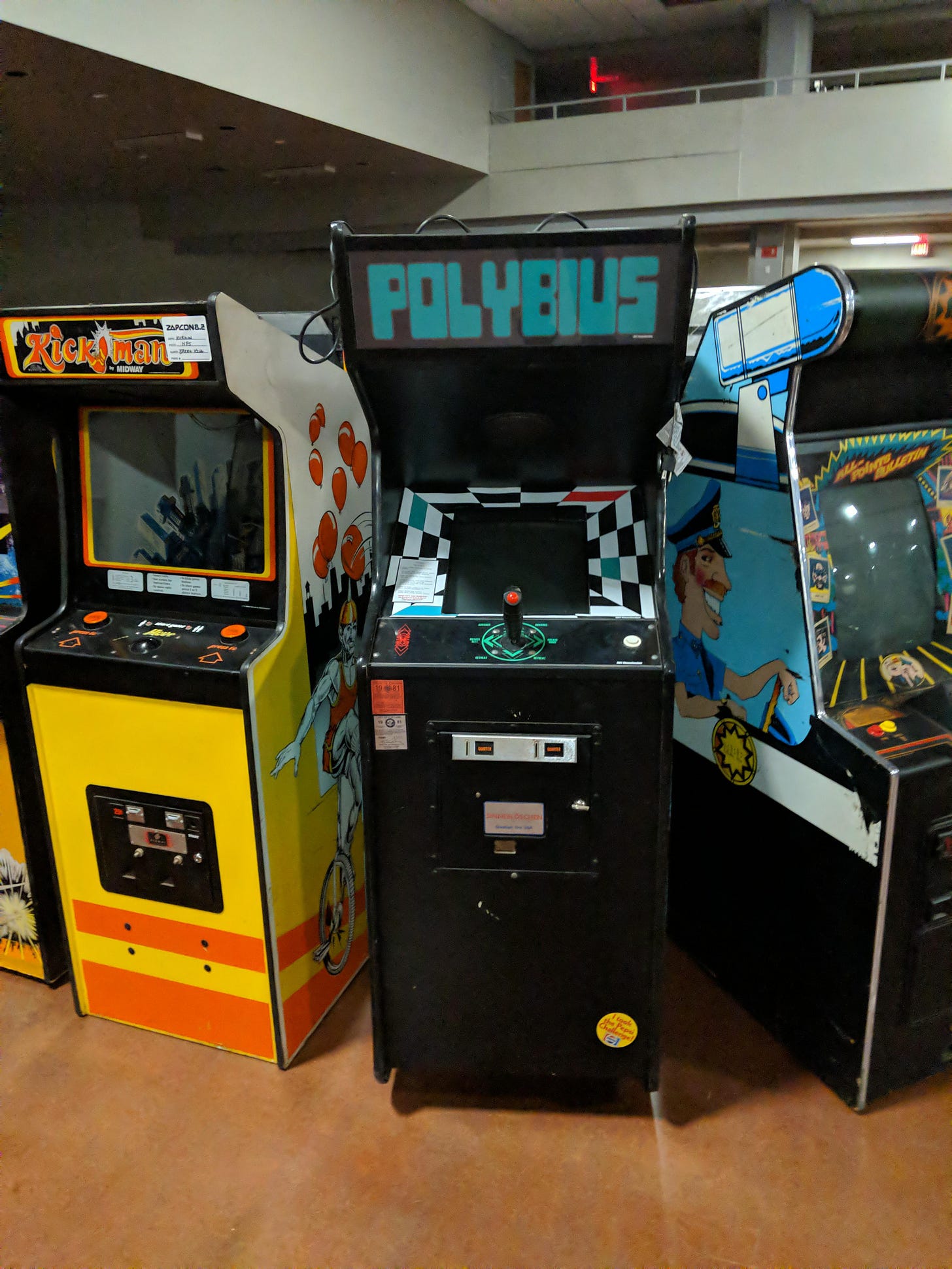





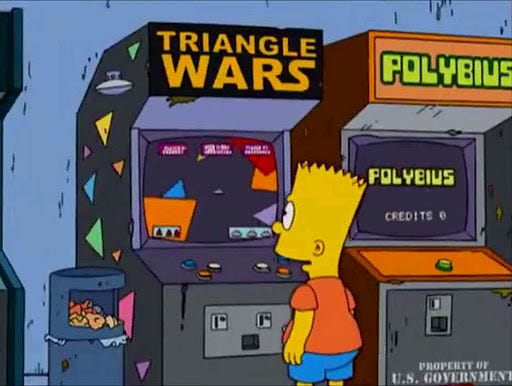

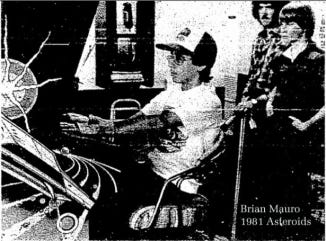



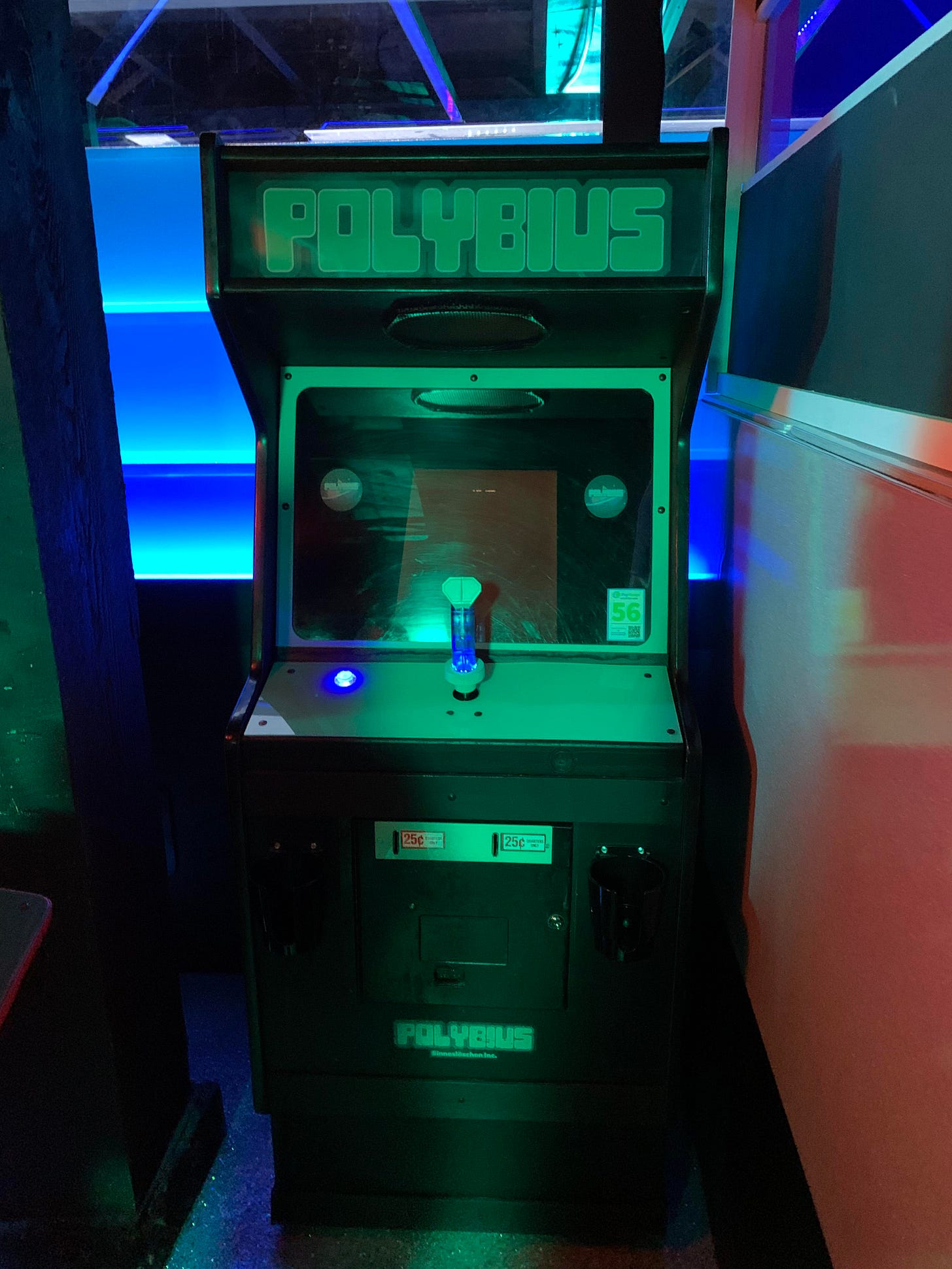
Rumour writhes and mutates like a living being, but all rumours have a root. Sometimes a fiction wholesale, sometimes a distortion of what happened and sometimes just something that was inexplicable from start to end.
An interesting read. As always the letter agencies do a good job in stirring up mystery with their skulduggery.
It's always interesting that even should something not exist the search frequently brings forth all kinds of strange creepy crawlies.
I love stories like this. Sometimes I think about the stuff we used to hear...they're obviously false, but maybe there's something there. Were there really people giving LSD to children? I know(or guess?) that this is a more common one but the little town I'm from had a pharmaceutical company that worked with some likewise stuff(among others it was one of the main suppliers of morfium for the Warsaw pact).
Also good touch on the migraine part. From the outside it can really look like something nefarious. I don't know if it was that, but I remember being blinded by pain(if it makes sense) and trying to hurt myself in some way so it might take away part of it.
(And yes...3 hours...just with D.C. and Appalachia...that's more than half of the country over here.)